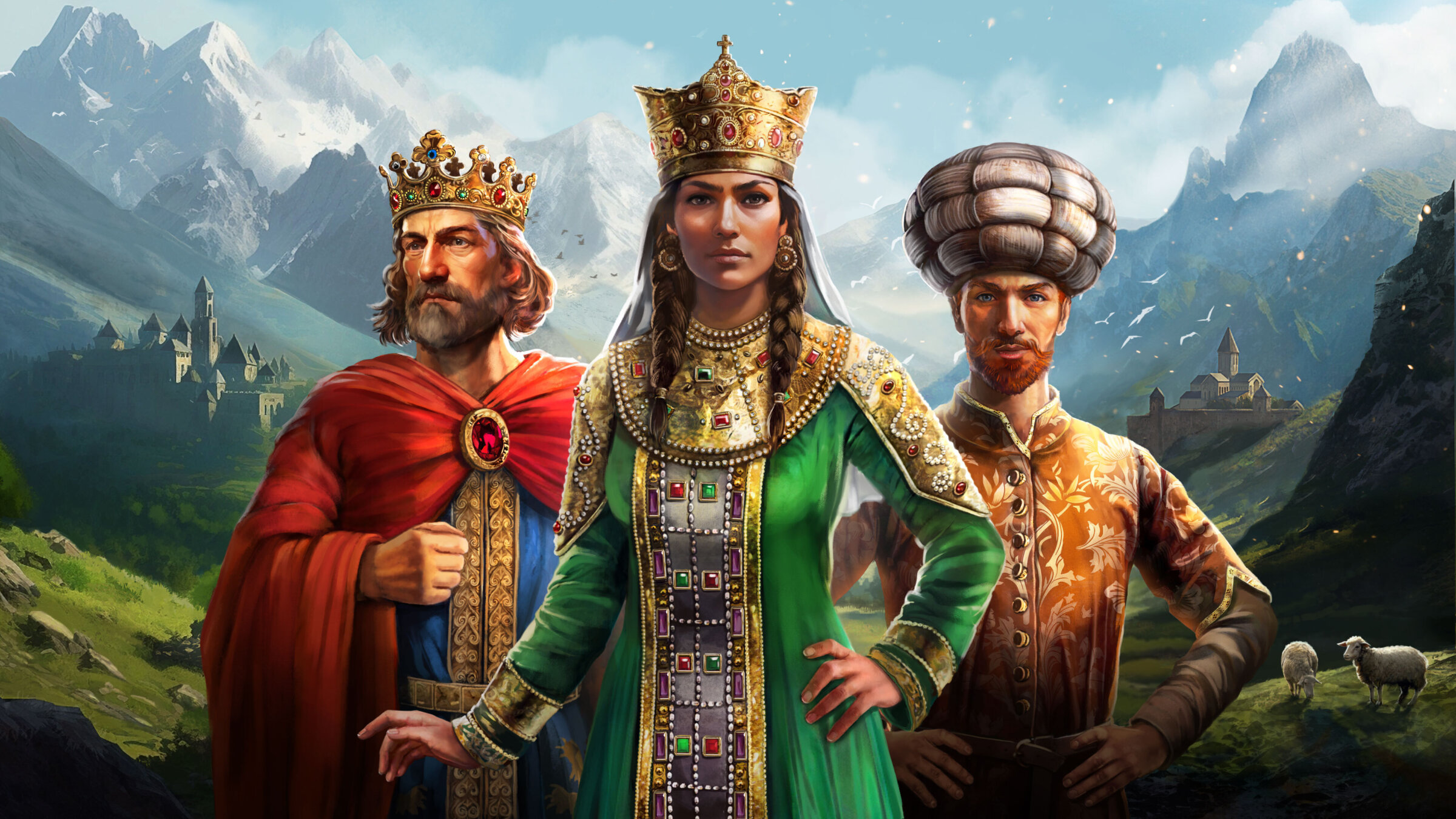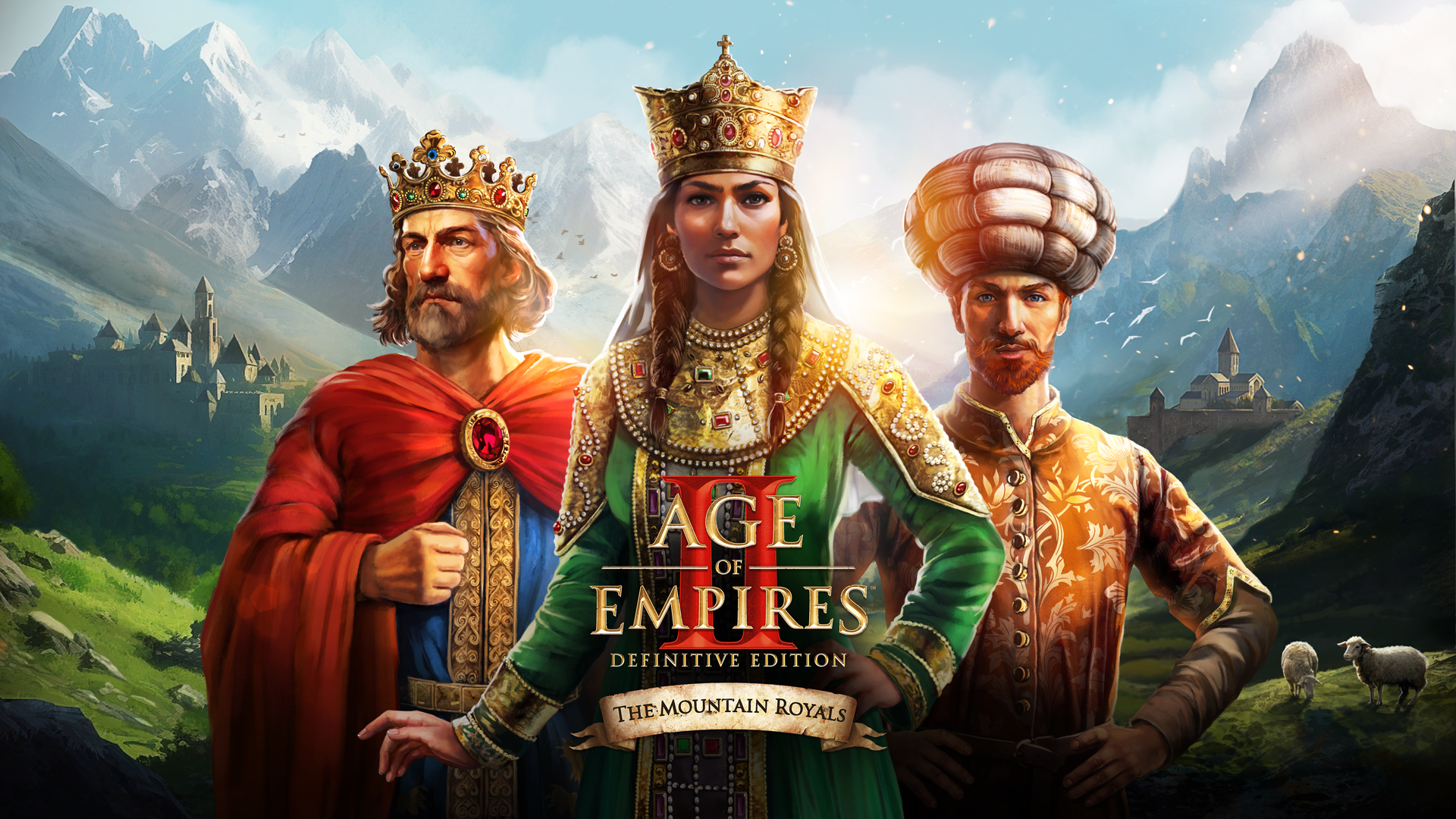
We are excited to introduce The Mountain Royals DLC for Age of Empires II: Definitive Edition! Unlock the rich history and untold stories of two remarkable civilizations, available now to pre-order with a 15% discount! Here are some of the new features you can expect:
- Two new civilizations – The Georgians and The Armenians
- Three new new fully voiced campaigns – Tamar, Thoros the Great, and Ismail
- Plus, a newly updated Persian civilization
The Mountain Royals will release on Tuesday, October 31, 2023 on Xbox, Microsoft Store, and Steam!
Two New Civilizations
 The Georgians
The Georgians
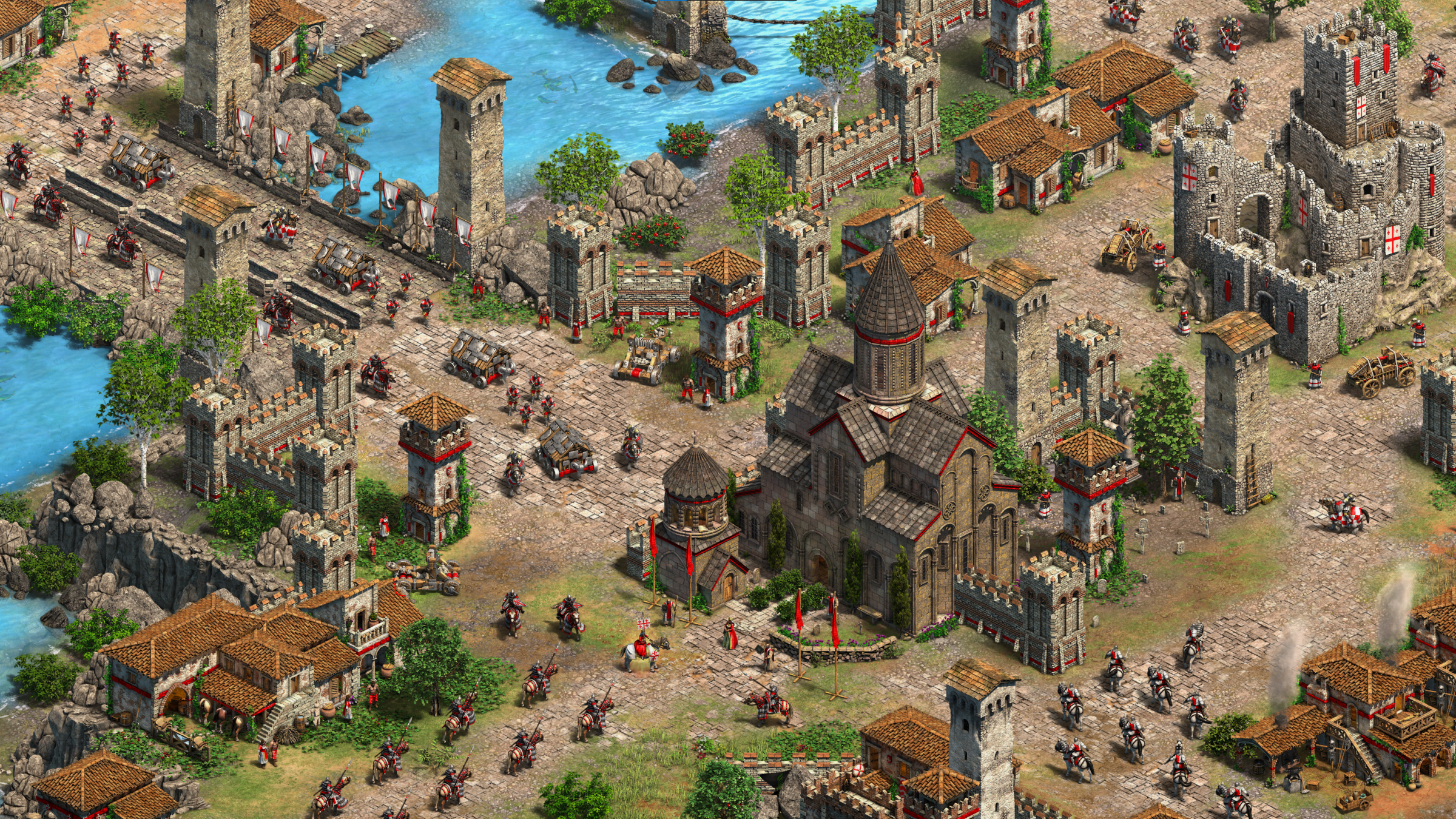
Carve out a sturdy kingdom in the shadow of the Caucasus Mountains and use the rugged terrain to your advantage as you repulse countless foreign invasions. The Georgian unique unit is the Monaspa, a brawny cavalry unit whose strength increases in numbers.
During the early medieval period, the regions south of the Caucasus Mountains were divided among numerous petty kingdoms that eluded foreign dominance largely through geographical isolation. Although the Byzantine Empire occasionally attempted to extend its influence into these polities, no significant lasting gains were made. However, the constant threat of foreign invasion catalyzed a gradual shift towards unity. In the early 11th century, Bagrat III finally succeeded in gathering these formerly squabbling states into the Kingdom of Georgia.
Despite prior tensions, the young Georgian kingdom and the Byzantine Empire made common cause when the Seljuk Turks poured into the regions south of the Caucasus, threatening both realms. Although the Byzantines suffered a catastrophic defeat at Manzikert in 1071 and abandoned many of their eastern possessions, the Georgian kingdom endured – albeit while suffering severe damage from the constant pillaging of its infrastructure. One particularly notable Georgian player in these conflicts was Gregorios Pakourianos, an officer who entered Byzantine service and became a high-ranking commander, eventually being placed in charge of most of the Empire’s Balkan provinces.
Georgia experienced a resurgence during the early 12th century under David IV the Builder, who – as his cognomen suggests – reformed Georgia’s infrastructure and restored much of its political stability while increasing its military might. This trend was continued by Georgia’s first ruling queen, Tamar (1160-1213), who elevated the kingdom’s power to new heights. Tamar’s power and aptitude was such that by the latter years of her reign she had transformed her realm from a minor kingdom threatened by its neighbors to a kingmaker on the verge of participating in future Crusades.
Medieval Georgia flourished largely due to the ingenuity and resilience of its people. Adaptation to the mountainous landscape permitted the Georgian people to build a thriving and defensible economy that sat on one of the many crossroads between empires. Formidable fortifications – from mountain castles to the towers of Svaneti – protected the realm against hostile incursions, while Georgian armies used the terrain to their advantage in parrying enemy attacks and striking back shrewdly. The Georgian armies were led by the Monaspa, an elite cavalry force that directly served the ruling king or queen. Heavily armored, meticulously organized, and well trained, they were known to annihilate an enemy front line with a devastating shock charge.
Georgia’s golden age ended abruptly in the 13th century when successive waves of Mongols cascaded into the regions surrounding the Caucasus Mountains. Unable to hold off the invaders, the Georgians were unwillingly reduced to vassals of the Mongol khanates. Although the realm briefly recovered from this servitude under George V the Brilliant (1286-1346), further misfortune ensued as the Bubonic Plague swept through most of Europe and Asia, claiming millions of lives. Some decades later, the armies of Tamerlane flooded through Georgia on several occasions, carrying out despicable campaigns of destruction and slaughter. Limping into the 15th century, the Kingdom of Georgia finally collapsed in the face of Turkoman invasions.
Defensive and Cavalry Civilization
- Start with a Mule Cart, but -50 food
- Fortifies Churcers provides Villagers in a 10 tile radius with +10% work rate
- Units and buildings receive -15% damage when fighting from higher elevation
- Cavalry regenerates 5 HP per minute in Feudal, 10 in Castle, 15 in Imperial Age
Unique Unit:
- Monspa: Georgian unique cavalry that becomes stronger when other Monaspas or Knight-line units are nearby.
Unique Technologies:
- Svan Towers: Defensive buildings receive +2 attack. Towers fire arrows that pierce multiple units (Castle Age)
- Aznauri Cavalry: Cavalry units take 15% less population space (Imperial Age)
 The Armenians
The Armenians
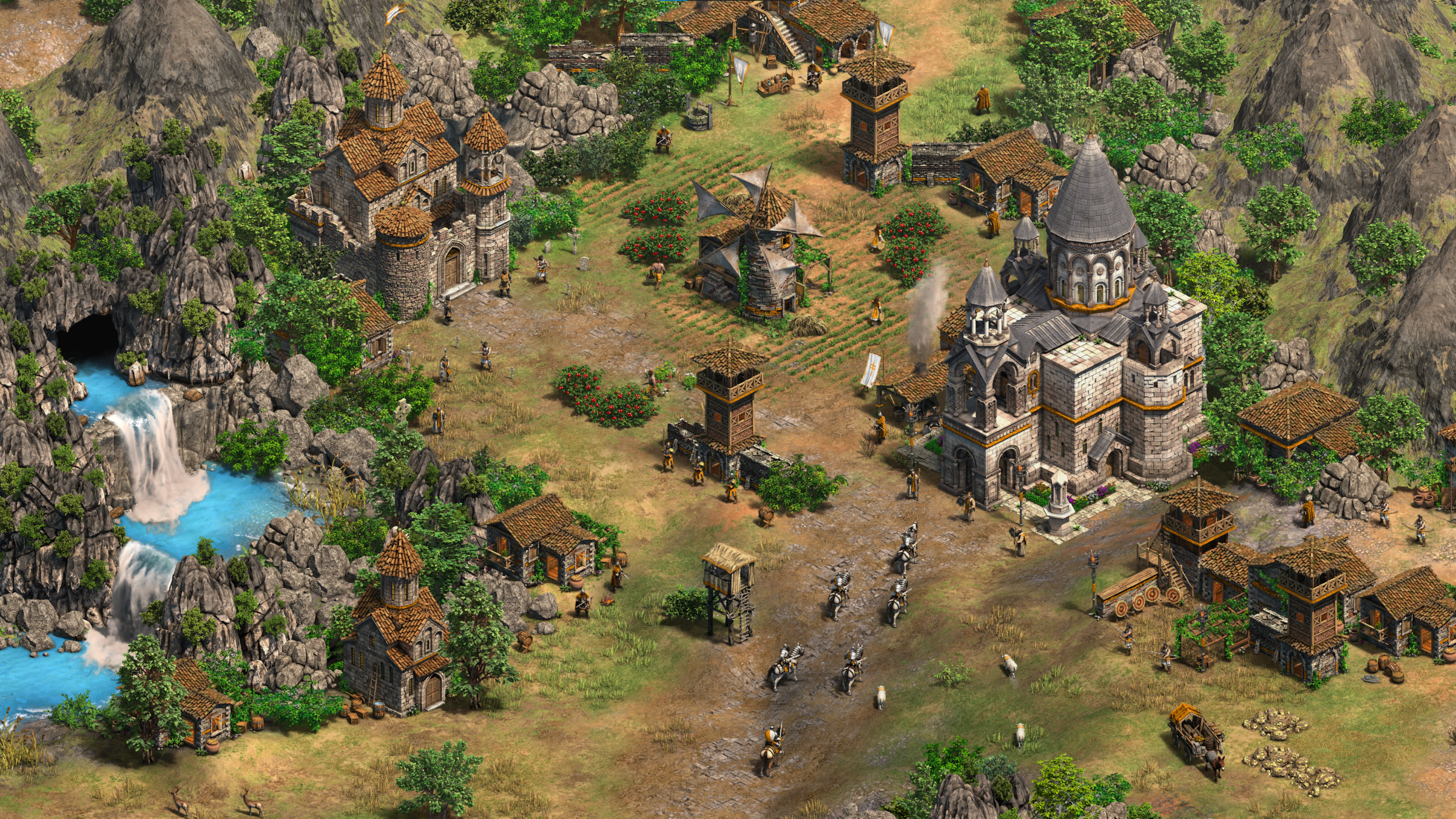
Rebuild your ancestral kingdom in the mountainous terrain near Lakes Van, Sevan, and Urmia. The Armenian unique units are the Composite Bowman, a skilled archer capable of piercing even the sturdiest armor, and the Warrior Priest, an infantry unit that can fight and heal allied units.
By the beginning of the medieval period, Armenia, a state whose history stretched back nearly a millennium prior, was caught in the midst of a conflict between two giants. Hostilities had flared up between the Eastern Roman Empire and the Sasanian Persian Empire, both of which often sought to set Armenia up as a buffer state to deter invasions along their northern frontier. As Roman power waned, the Persians gained the upper hand, but their oppressive overlordship – especially the persecution of Armenian Christians in an attempt to spread Zoroastrianism – sparked constant tensions. These culminated in the Battle of Avarayr (451), where the magnate Vardan Mamikonian – who lives on in Armenian national lore – died defending his homeland.
The Near East was changed forever in the 7th century when the forces of the rising Arab Caliphate poured into the Levant. Withered by mounting internal crises and constant conflict, Persia and Byzantium – the medieval iteration of Eastern Rome – were unable to fend off the Arab invasions, causing the former to collapse entirely and the latter to lose most of its territory in the Levant and Africa. Armenia, formerly coveted by both powers, was then conquered by the armies of the new Umayyad Caliphate. History repeated itself, however, as an outsider’s oppressive rule once more led to violent rebellions. After the Abbasid Caliphate replaced the Umayyad Caliphate, Armenia gradually drifted further and further towards autonomy.
By the late 9th century, the balance of power had shifted once more. A rejuvenated Byzantium had diminished Abbasid power along the frontier, offering Armenia the opportunity to extricate itself from foreign domination. Ashot I (9th century) of the Bagratid family shrewdly allied himself with the Byzantines and became Armenia’s first king in four centuries. The fledgling Armenian kingdom remained in a precarious position and was invaded by the Caliphate’s vassals several times, but during the 10th century gradually stabilized, capitalizing on the resurgence of lucrative trade routes and the political fortunes of its powerful neighbors.
Trouble arrived once more during the 11th century, however, as the Byzantines sought to fully incorporate Armenia into their domain. Simultaneously, massive invasions of Seljuk Turks rocked the Middle East, thoroughly redefining the balance of power and ravaging much of the region. As Seljuk incursions tore Armenia apart, Byzantium – albeit loosely – incorporated the leftover pieces. These shifts led to a mass migration of Armenians to Cilicia in southeast Anatolia, where they established a new state on the periphery of the Byzantine Empire. Crucially, these nomadic invasions also led the Armenians to incorporate cohorts of composite bowmen into their armies as a recourse against large mounted forces.
Cilician Armenia initially sat in a precarious position, but that swiftly changed when the Crusades led thousands of European soldiers to attack the Seljuks and neighboring Islamic states in Palestine and the Levant. The Armeno-Cilicians allied with the crusaders and fought with them on several occasions against their mutual foes. Byzantium made further designs on the region during the 12th century, but under the leadership of Thoros II the Great, the Armeno-Cilicians prevailed. As the Mongol invasions of the 13th century rang the death-knell for many of the region’s states, Cilician Armenia wisely allied with the Mongols, but then struggled against the rising Mamluk Sultanate of Egypt and Syria. The last straw for the battered kingdom was Tamerlane’s invasion of 1400, which reduced it to a minor polity wedged between the rising superpowers to come.
Infantry and Naval Civilization
- Mule Carts cost -25%
- Mule Cart technologies are 25% more effective
- First Fortified Church receives a free Relic
- Barracks units (except Man-at-Arms) available one age earlier
- Galley-line fires two projectiles
Unique Units:
- Composite Bowman: Armenian unique archer unit with attack that ignores armor
- Warrior Priest: Armenian unique infantry unit which can heal friendly units.
Unique Technologies:
- Cilician Fleet: Demolition Ships +33% blast radius; Galley-line and Dromons +1 range (Castle Age)
- Fereters: Infantry (except Spearman-line) +30HP, Warrior priests +100% heal speed (Imperial Age)
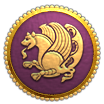 The Persians – Updated!
The Persians – Updated!
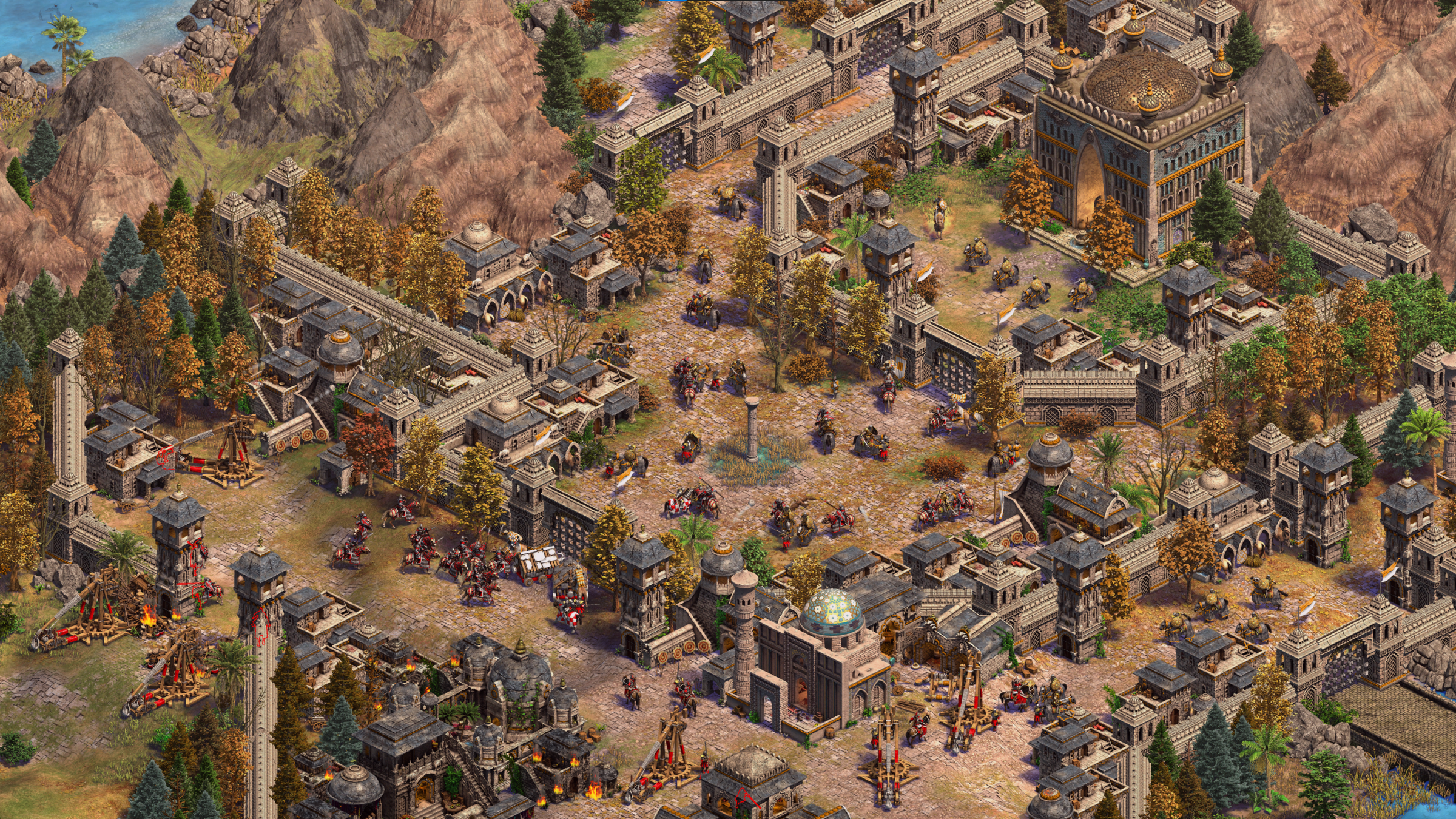
Traverse the highlands with the fearsome cavalry of the Persians, who will be receiving a massive free update to their gameplay alongside The Mountain Royals. The update features the Savar, a unique paladin replacement that is adept at taking down enemy ranged units.
Three New Thrilling Campaigns
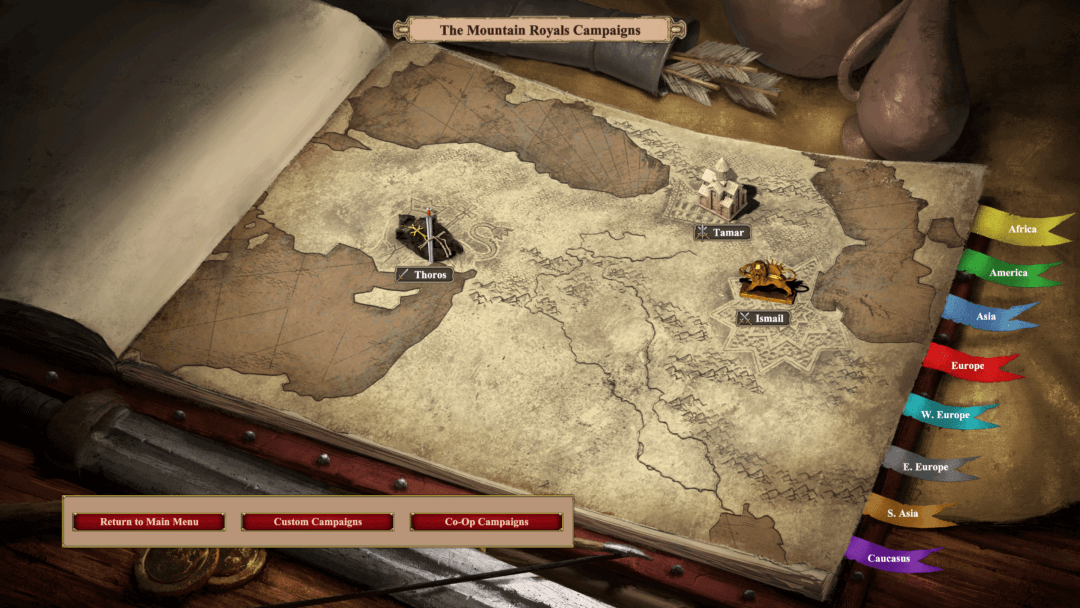
Tamar’s Ascension
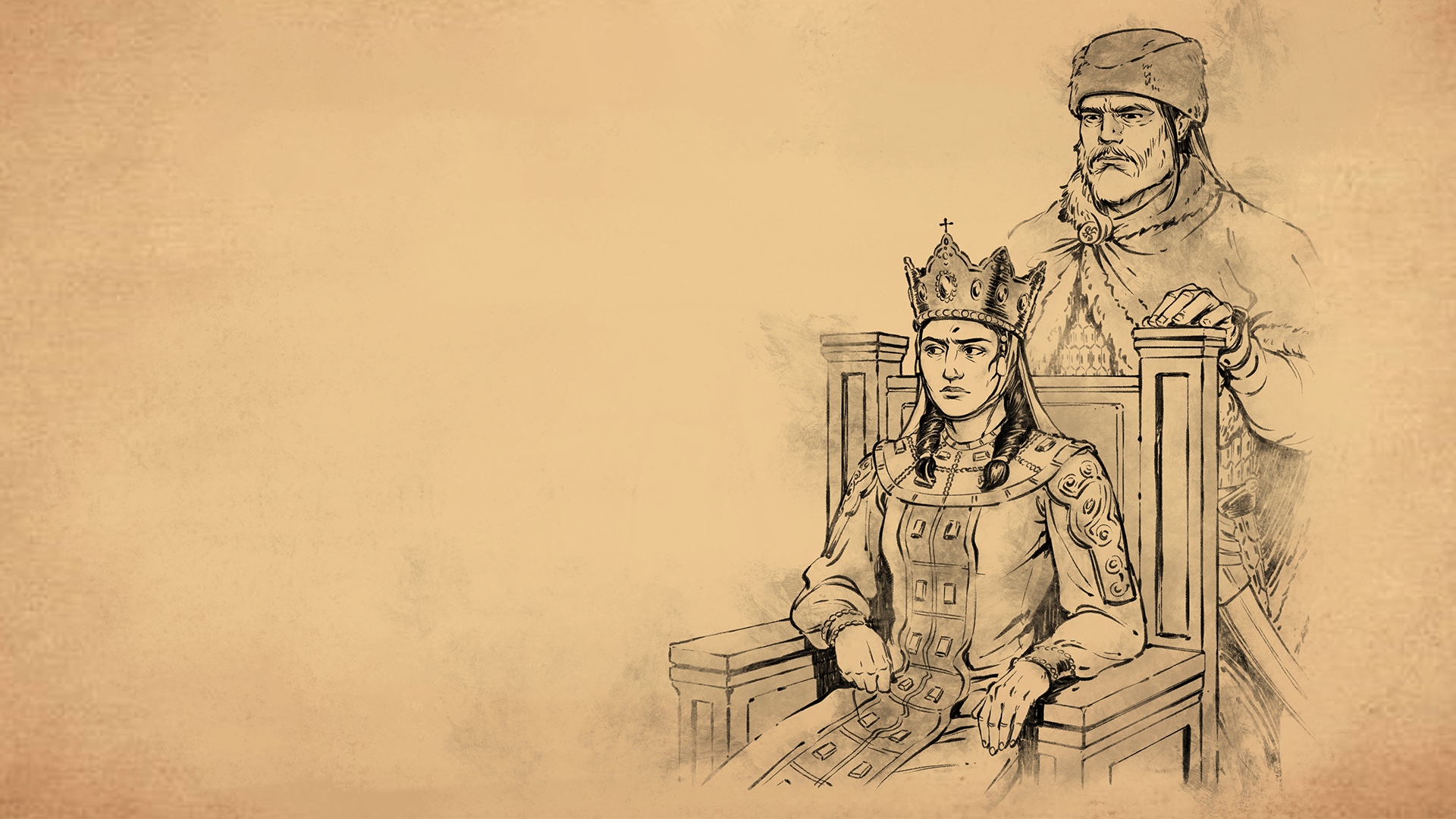
Brought up on stories of David the Builder, the young and impassioned Tamar ascends her great-grandfather’s throne with elaborate plans for her bustling kingdom. However, she quickly finds out that wielding such power is more than a simple matter of birthright. Can Georgia’s first queen overcome her skeptics and leave an imprint to endure well beyond her lifetime?
In this campaign, you will play as the Georgians.
Thoros The Great
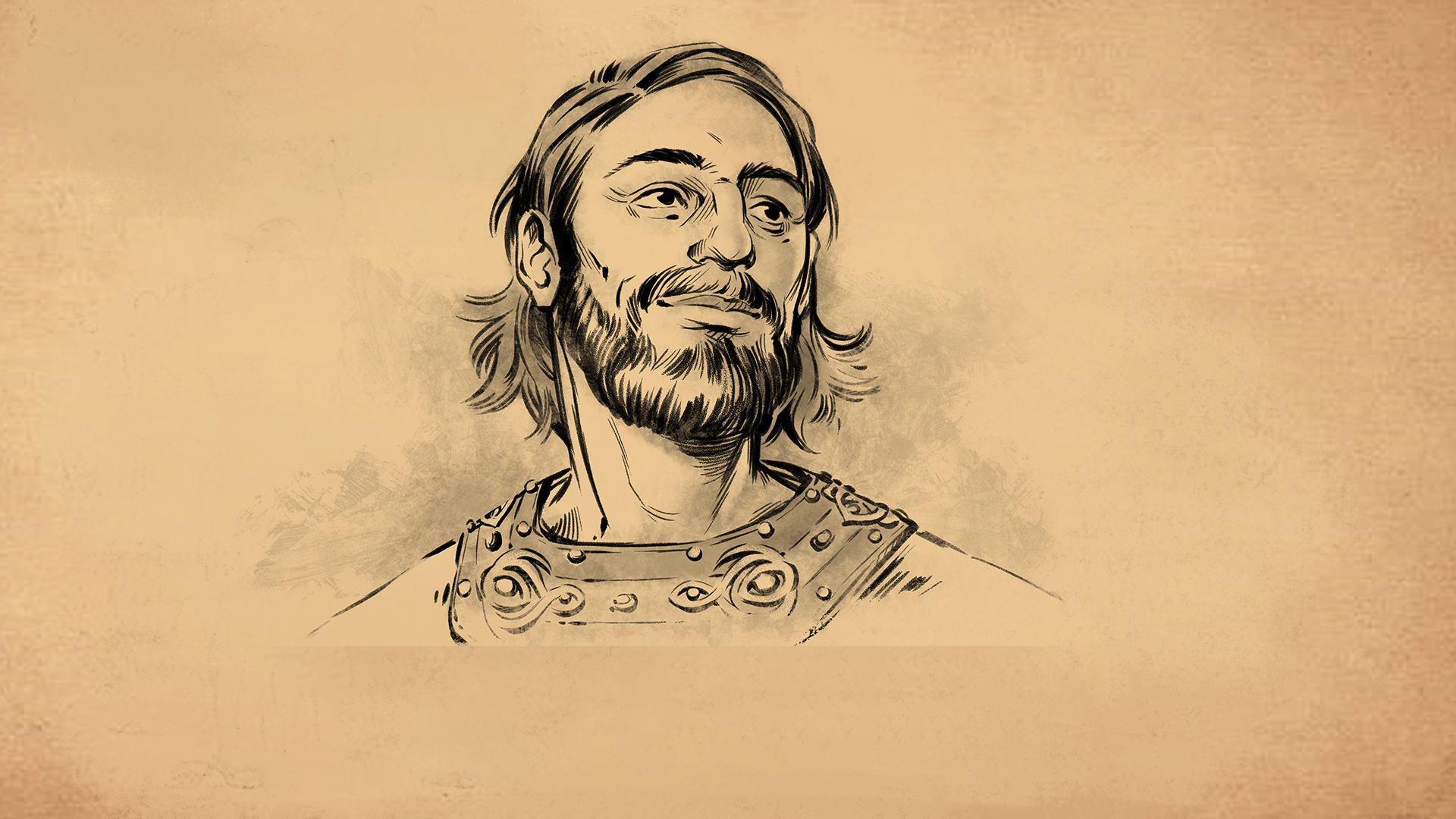
The tiny kingdom of Cilician Armenia lies between hostile empires, its ruling family in Byzantine captivity. When Prince Thoros escapes, he embarks on a dangerous campaign to liberate his homeland, but the vengeful Byzantines are not his only foes. The Seljuk Turks covet the region as well, and a ruthless Frankish crusader is pursuing his own schemes to the south.
In this campaign, you will play as the Armenians.
Ismail
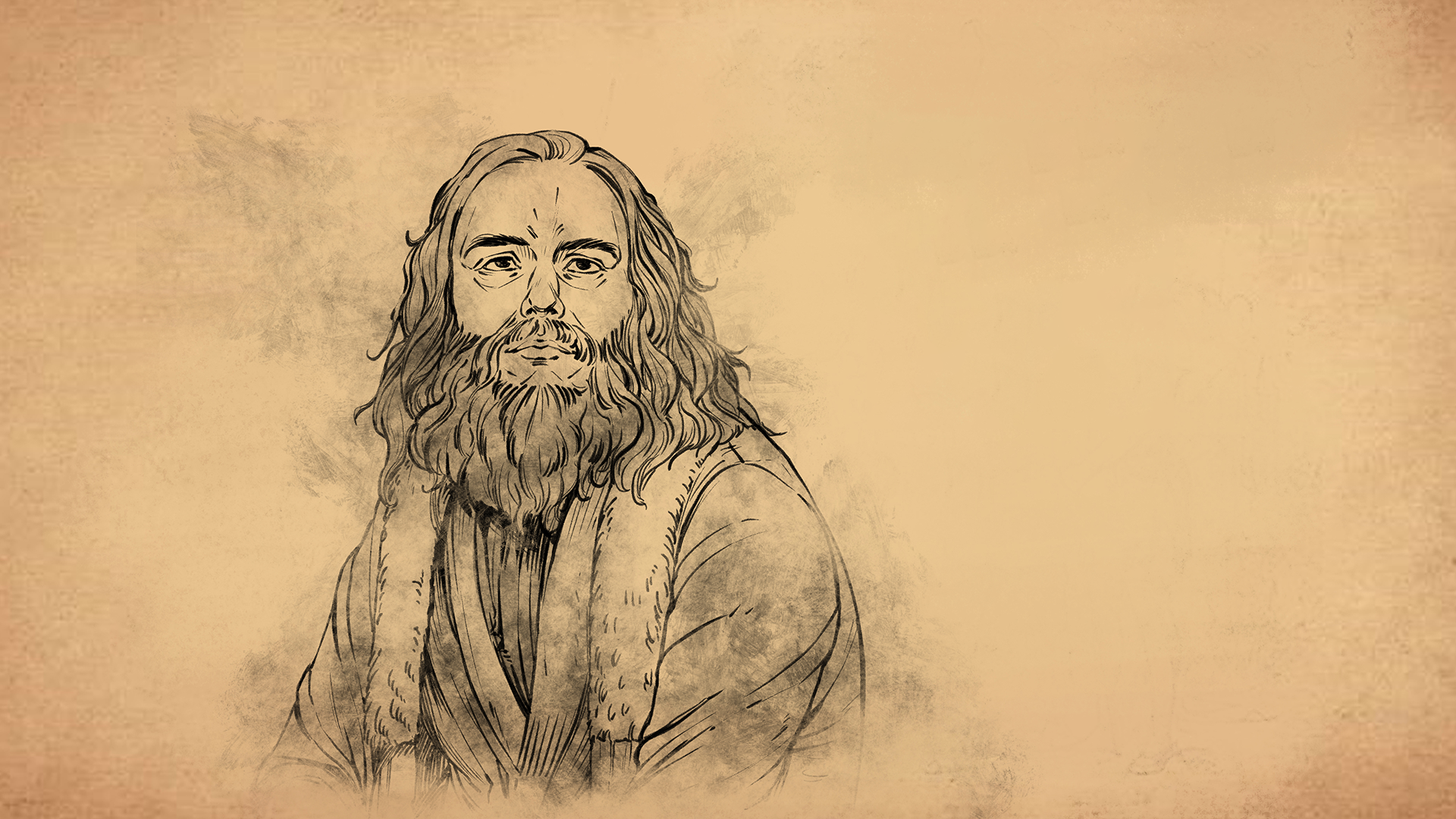
The orphaned prodigy Ismail leads the mysterious Safavid Order through war-torn Persia! Will this charismatic visionary lay the groundwork for one of the most illustrious empires of the Islamic world, or will his delusions of grandeur be his ultimate undoing?
In this campaign, you will play as the Persians.
Our teams have been working on The Mountain Royals for some time, expanding the storytelling of Age of Empires II: Definitive Edition. As we announce this DLC publicly and make it available for pre-order, we’re aware of the events currently affecting modern day Armenians. The Mountain Royals has not been designed as a comment or reference to modern day events.
Pre-Order Now!
